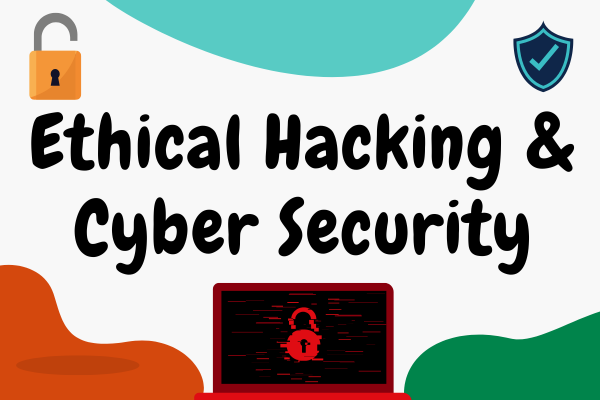Linux System Administrator involves managing and maintaining Linux-based systems, which are widely used for servers, desktops, and embedded systems. As a Linux System Administrator, you are responsible for the installation, configuration, and maintenance of Linux systems, ensuring they run efficiently, securely, and reliably.
Key Responsibilities of a Linux System Administrator
- System Installation and Configuration:
- Installing Linux distributions (e.g., Ubuntu, CentOS, Red Hat) and configuring the system for optimal performance.
- Setting up and configuring system services and network settings.
- Managing partitions, filesystems, and disk storage.
- User and Group Management:
- Creating and managing user accounts and groups.
- Setting permissions and access controls for files and directories.
- Configuring authentication methods and enforcing password policies.
- Package Management:
- Using package managers (e.g., APT for Debian-based systems, YUM/DNF for Red Hat-based systems) to install, update, and remove software packages.
- Managing software repositories and dependencies.
- System Monitoring and Performance Tuning:
- Monitoring system performance using tools like
top,htop,vmstat, andiostat. - Analyzing system logs and metrics to identify and resolve performance issues.
- Configuring and tuning system resources (CPU, memory, disk I/O) for optimal performance.
- Monitoring system performance using tools like
- Networking and Security:
- Configuring network interfaces and troubleshooting network issues.
- Setting up firewalls (e.g.,
iptables,firewalld) and securing network services. - Implementing security measures such as SELinux/AppArmor and configuring SSH for secure remote access.
- Backup and Recovery:
- Implementing backup strategies and using tools like
rsync,tar, andbackup softwareto create and manage backups. - Performing system restores and disaster recovery testing to ensure data integrity and availability.
- Implementing backup strategies and using tools like
- System Updates and Patch Management:
- Applying system updates and security patches to keep the system up to date.
- Managing the update process to minimize downtime and disruptions.
- Automation and Scripting:
- Writing and maintaining shell scripts (e.g., Bash) to automate routine administrative tasks.
- Using configuration management tools (e.g., Ansible, Puppet, Chef) to automate and manage system configurations.
- Log Management:
- Configuring and managing log files and log rotation using tools like
logrotate.Analyzing log files to troubleshoot issues and monitor system health.
- Configuring and managing log files and log rotation using tools like
- Service Management:
- Managing and configuring system services and daemons using
systemd,init.d, or other service management frameworks. - Monitoring and troubleshooting service failures and performance issues.
- Managing and configuring system services and daemons using
Common Tools and Commands for Linux System Administration
- Package Management:
apt-get,apt,dpkg(Debian/Ubuntu)yum,dnf,rpm(Red Hat/CentOS/Fedora)
- User and Group Management:
useradd,usermod,userdelgroupadd,groupmod,groupdelpasswd,chage
Networking:ifconfig,ip,netstat,ssping,traceroute,nslookup,dig
System Monitoring:top,htop,vmstat,iostatfree,df,du
Service Management:systemctl,service,chkconfig
File and Directory Management:ls,cp,mv,rm,find,locate
Log Management:tail,less,grep,awk,sed
Backup and Recovery:rsync,tar,dd
Scripting:bash,sh,awk,sed
Security:firewalld,iptables,selinux,apparmorssh,scp,sftp
Best Practices for Linux System Administration
- Regular System Updates: Keep the system up-to-date with the latest patches and updates to protect against vulnerabilities and improve system performance.
- Implement Strong Security Measures: Use strong passwords, configure firewalls, and regularly audit system security settings. Implement SELinux/AppArmor for additional security layers.
- Automate Routine Tasks: Use scripting and automation tools to reduce manual effort, minimize errors, and improve efficiency.
- Monitor System Performance: Continuously monitor system performance and resource usage. Set up alerts for critical system metrics and thresholds.
- Backup Data Regularly: Implement a robust backup strategy to ensure data integrity and availability. Test backups regularly to verify they can be restored.
- Document Configuration Changes: Maintain detailed documentation of system configurations, changes, and procedures. This helps in troubleshooting and ensures consistency.
- Secure Remote Access: Use SSH for remote access and configure it securely. Disable root login via SSH and use key-based authentication instead of passwords.
- Manage User Permissions: Follow the principle of least privilege when assigning user permissions. Regularly review and adjust permissions as needed.
- Implement Logging and Auditing: Enable and configure logging for system events and security audits. Regularly review logs to identify potential issues or security incidents.
- Stay Informed: Keep up-to-date with the latest developments in Linux system administration, including new tools, best practices, and emerging security threats.
Common Challenges in Linux System Administration
- Compatibility Issues: Different Linux distributions may have variations in tools and configurations, which can cause compatibility issues when managing multiple systems.
- Security Threats: Protecting against evolving security threats requires continuous monitoring, regular updates, and effective security practices.
- System Performance Bottlenecks: Identifying and resolving performance issues can be challenging, especially in complex systems with high workloads.
- Backup and Recovery: Ensuring that backups are reliable and that recovery procedures work as expected can be difficult, particularly in large environments.
- Complex Configuration Management: Managing and maintaining configurations across multiple systems can be complex and error-prone without proper tools and practices.
- User Management: Handling user accounts and permissions efficiently, especially in environments with many users, requires careful planning and management.
- Hardware and Software Compatibility: Ensuring that hardware and software are compatible with the Linux distribution and version in use can sometimes be challenging.
- Documentation and Communication: Keeping documentation up-to-date and communicating changes effectively with other team members or users can be challenging.
Conclusion
Linux System Administration is a critical role that requires a deep understanding of Linux operating systems, networking, security, and system management. By mastering key responsibilities and best practices, Linux administrators ensure the stability, performance, and security of Linux environments. Continuous learning and adaptation to new technologies and practices are essential for effective Linux system administration.










